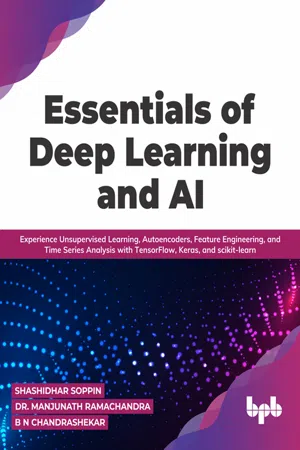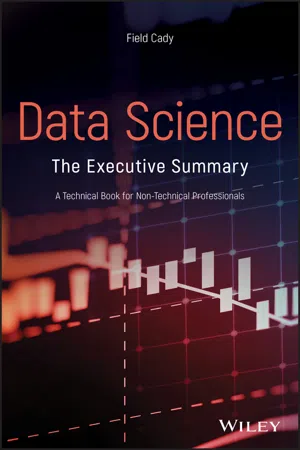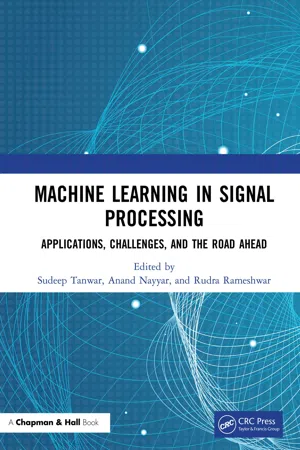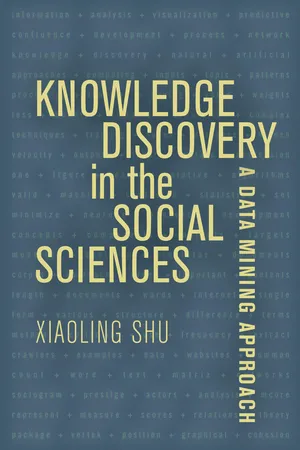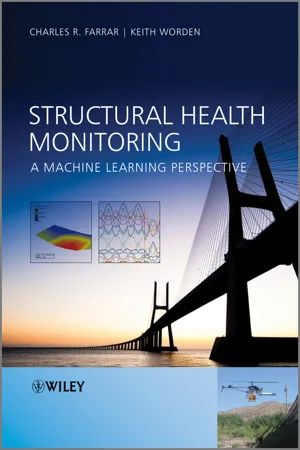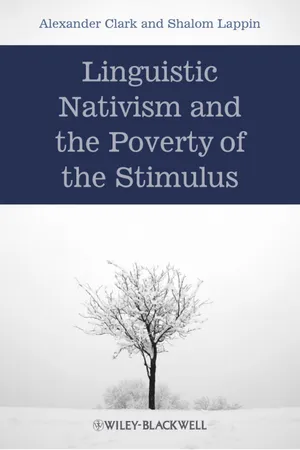Supervised Learning
Supervised learning is a type of machine learning where the algorithm is trained on labeled input-output pairs. The algorithm learns to map the input to the output based on the given examples. It requires a training dataset with known outputs to produce accurate predictions or classifications for new data.
8 Key excerpts on "Supervised Learning"
- eBook - ePub
Essentials of Deep Learning and AI
Experience Unsupervised Learning, Autoencoders, Feature Engineering, and Time Series Analysis with TensorFlow, Keras, and scikit-learn
- Shashidhar Soppin, B N Chandrashekar, Dr. Manjunath Ramachandra(Authors)
- 2021(Publication Date)
- BPB Publications(Publisher)
...C HAPTER 2 Supervised Machine Learning A s indicated in the previous section, machine learning is defined as one of the branches of computer science in which algorithms learn from the data or data sets available to them. With this learning mechanism, the output of these mechanisms will be predictive models. Among many learning mechanisms that exist in machine learning, this chapter focuses on what is supervised machine learning, the data preparation, cleanup, and a few learning mechanisms of supervised machine learning. It later delves into the specifics of classification, regression, optimization, and loss methods in Supervised Learning. It then moves on with the discussion on the performance of learning mechanisms and closes by giving a few examples or use cases of supervised machine learning in the practical and industry areas. The three main things that need to be considered while adopting supervised machine learning is collecting data, labeling data, and predicting data. Supervised Learning helps organizations to understand the unwanted outcomes and how to avoid them. In case of expected outcomes, it can work on adopting techniques to improve them. Industries can use supervised machine learning for applications like allocating human resources, forecasting sales, and detecting fraud...
- eBook - ePub
Data Science
The Executive Summary - A Technical Book for Non-Technical Professionals
- Field Cady(Author)
- 2020(Publication Date)
- Wiley(Publisher)
...But they make those decisions in fractions of a second, consistently, and at scale. Any time users are presented with a recommendation engine, or software behaves differently to anticipate a somebody's actions, or the computer flags something as being worthy of human attention, the logic making those decisions is liable to be a machine learning model. 5.1 Supervised Learning, UnSupervised Learning, and Binary Classifiers Machine learning falls into two broad categories called “Supervised Learning” and “unSupervised Learning.” Both of them are based on finding patterns in historical data. In Supervised Learning we have something specific (often called the “target” variable) that we are trying to predict about the data, and we know what the right predictions are for our historical data. The goal is specifically to find patterns that can be used to predict the target variable for other data in the future, when we won't know what the right answer is. This is by far the most high‐profile, clearly useful application of machine learning. In unSupervised Learning there is no specific target variable that we are trying to predict. Instead the goal is to identify latent structures in the data, like the datapoints tending to fall into several natural clusters. Often information like that is not an end in itself, but gets used as input for Supervised Learning. The simplest and most important type of Supervised Learning is the binary classifier, where the target variable we are trying to predict is a yes/no label, typically thought of as 1 or 0. Typically the labeled data is divided into “training data” and “testing data.” The algorithm learns how to give the labels by pattern‐matching to the training data, and we measure how well it performs by seeing the labels it gives to the testing data...
- eBook - ePub
- Paul D. McNicholas, Peter Tait(Authors)
- 2019(Publication Date)
- Chapman and Hall/CRC(Publisher)
...CHAPTER 5 Supervised Learning S UPERVISED LEARNING uses labelled data to make predictions about unlabelled data. One defining characteristic of Supervised Learning is that the goal is prediction, rather than modelling or inference. A basic nomenclature, notation and framework for Supervised Learning is laid down before cross-validation is introduced. After that, a simple and yet quite effective Supervised Learning approach, i.e., K -nearest neighbours classification, is discussed. The famous CART (classification and regression trees) framework is discussed next, followed by the bootstrap. The bootstrap is preparatory for the use of CART for ensemble learning; specifically for random forests. The chapter concludes with another ensemble learning approach, gradient boosting using XGBoost. 5.1 INTRODUCTION Consider the situation where there is an outcome variable Y that we want to predict based on several predictor variables X 1, …, X p, which we express as a vector X = (X 1, …, X p)′. Suppose that we observe n pairs (y 1, x 1), …, (y n, x n) and the objective is to learn the values of “new” y n +1, …, y m for corresponding values of the predictor variables, i.e., for x n +1, …, x m. Broadly speaking, one can use the observed pairs (y 1, x 1), …, (y n, x n) to build a model of the form y i = f (x i) + e i, (5.1) where f (x) is a function, sometimes called the learner or predictor, that takes a value x i and returns a prediction for y i, and e i is the associated error. Rearranging (5.1) gives e i = y i − f (x i), (5.2) for i = 1, …, n, which is the error incurred by using f (x i) to predict y i. Some function of (5.2) can then be used to assess how well the learner performs before we apply it to predict y i for i = n + 1, …, m. Within the Supervised Learning paradigm, (y 1, x 1), …, (y n, x n) can be thought of as the labelled data because each value x i has a corresponding “label” y i...
- eBook - ePub
Machine Learning in Signal Processing
Applications, Challenges, and the Road Ahead
- Sudeep Tanwar, Anand Nayyar, Rudra Rameshwar, Sudeep Tanwar, Anand Nayyar, Rudra Rameshwar(Authors)
- 2021(Publication Date)
- Chapman and Hall/CRC(Publisher)
...In an unsupervised machine learning technique, the model needs to be supervised. Supervised Learning permits to gather data or yield an output data from the earlier experience. In unsupervised machine learning, every kind of unknown patterns is found in data. Weather condition, timing, and holiday are some of the criteria to be considered to reach back home. Another example is identifying unknown dogs using the past Supervised Learning method. Regression, classification, clustering, and association are the subcategories of learning techniques. Machines are trained to perform activities in various areas in order to make man work easier with less time consumption. If the amount of data is lesser, and if it consists of labeled data for training, then the choice is Supervised Learning. Better performance is obtained in unSupervised Learning as it can accommodate new entries and results in large data sets. In conclusion, in the development of machine learning models of choice, there is a necessity of considering various IDEs, development languages, and platforms. References S. Theodoridis and K. Koutroumbas, Pattern Recognition, 4th Ed. (Academic Press, ISBN 978-1-59749-272-0, 2009). S. Theodoridis and K. Koutroumbas, Introduction to Pattern Recognition: A Matlab Approach. (Academic Press, ISBN 978-0-12-374486-9, 2010). K. P. Murphy, Machine Learning: A Probabilistic Perspective. (The MIT Press, ISBN 978-0-262-01802-9, 2012). F. Hu and Q. Hao, Intelligent Sensor Networks: The Integration of Sensor Networks, Signal Processing and Machine Learning. (CRC Press, ISBN 978-1-4398-9282-4, 2013). S. Gannot, E. Vincent, S. Markovich-Golan, and A. Ozerov, “A consolidated perspective on multimicrophone speech enhancement and source separation,” IEEE Trans. Audio Speech Lang. Process. 25(4), 692–730 (2017). E. Vincent, T. Virtanen, and S. Gannot, Audio Source Separation and Speech Enhancement (Wiley, New York, 2018). D. K. Mellinger, M. A. Roch, E.-M. Nosal, and H...
- eBook - ePub
Knowledge Discovery in the Social Sciences
A Data Mining Approach
- Prof. Xiaoling Shu(Author)
- 2020(Publication Date)
- University of California Press(Publisher)
...PART V DATA MINING: Supervised Learning Chapter 8 GENERALIZED REGRESSION Supervised Learning Supervised Learning differs from unSupervised Learning in that an algorithm learns from a training data set in a process similar to that of a teacher supervising a student’s learning. In Supervised Learning, we have prior knowledge of the target variables—the correct answers—and the algorithm progressively makes predictions on the training data, compares them to the outcome variables (which act as the teacher), and makes corrections with feedback. In Supervised Learning, we use a series of input variables to predict an output variable. We do so by using an algorithm to learn about the function by using the input variable x to produce an output variable y : y = f(x). The goal is to identify the function f such that the function f can produce the outcome variables y using new input data x. There are two general types of Supervised Learning problems: those predicting categorical output variables and those predicting continuous output variables. For categorical output variables, decision trees, logistic regressions, and neural networks build functions using input variables to estimate and predict categorical output variables, such as divorced versus married or survival versus death. For continuous output variables, regression models generate functions that link input variables to numerical output variables, such as income in dollars or time in hours. PARAMETER LEARNING Parameter learning is a form of Supervised Learning. This approach starts with models by specifying their structures but leaving unspecified their numerical parameters. Researchers then compute the best values for these parameters using data to train the model with feedback from the existing output variables...
- Steven G. Rogelberg(Author)
- 2016(Publication Date)
- SAGE Publications, Inc(Publisher)
...Machine Learning Machine Learning Seth M. Spain Seth M. Spain Spain, Seth M. 903 906 Machine Learning Seth M. Spain Machine learning is a field overlapping with statistics and computer science and strongly associated with big data. One important point, however, is that machine learning techniques often provide their largest advantages in medium-sized data sets (say, a few hundred to a few thousand cases); in truly large data sets, different techniques converge. Machine learning grew out of artificial intelligence research. It has been characterized as methods that allow a “machine” (typically an algorithm) to optimize some error function (a loss function or an objective function) to learn to do a specific task without being explicitly programmed to do that task (e.g., making predictions, classifying cases). The keys to the machine learning approach involve the discipline’s approach to the data. Machine learning techniques are usually evaluated using cross-validation. The algorithm learns on a training set of data, and its performance is evaluated on different data, the test set. Machine learning techniques come in two major categories: supervised and unsupervised. Supervised techniques include two classes of problems: regression problems, or quantitative prediction, and classification problems, or qualitative prediction. Supervised techniques expect that “correct answers” exist in the training data. Ordinary least squares regression is an example of supervised learning...
- eBook - ePub
Structural Health Monitoring
A Machine Learning Perspective
- Charles R. Farrar, Keith Worden(Authors)
- 2012(Publication Date)
- Wiley(Publisher)
...11 Supervised Learning – Classification and Regression 11.1 Introduction The last chapter discussed a framework for detecting damage when only data from the normal condition of a structure or system are available for training an algorithm. The framework – novelty detection based on unSupervised Learning – is undeniably powerful, but fails to provide any diagnostic capability beyond detection (and occasionally location). These are the lowest levels of capability in Rytter's hierarchy (Rytter, 1993) and in general the SHM practitioner would always wish to have further information. One would always like to be able to locate and size any damage; this information is also critical in progressing to prognostics. As observed in Chapter 9, it is usually rather difficult to obtain data from damaged systems and structures because of cost and practicality constraints. However, when such data are available, a whole new range of algorithms based on Supervised Learning become possible. The objective of this chapter is to introduce and develop the theory of Supervised Learning algorithms. It will begin with a discussion of one of the oldest and most reliable learning algorithms, one based on the idea of the artificial neural network. 11.2 Artificial Neural Networks 11.2.1 Biological Motivation One could argue that the discipline of machine learning really began with the development of artificial neural networks (ANNs). The original motivations for the research were mainly: (a) a wish to shed light on the actual learning and computing processes in the human brain and (b) a desire to find and exploit an alternative computing paradigm to the serial (von Neumann) computer. It is arguably the latter motivation that has driven much of recent research and this has been of considerable benefit to the engineering community. The subject is extremely mature now and substantial textbook and monograph accounts exist; excellent examples are Bishop (1998) and Haykin (1994)...
- Alexander Clark, Shalom Lappin(Authors)
- 2010(Publication Date)
- Wiley-Blackwell(Publisher)
...The algorithm comes with a model of the phenomena to be learned, where the algorithm may indicate this model implicitly. The model defines the hypothesis space of possible functions among which the algorithm must choose. The model is trained on part of a dataset, typically a corpus with annotations which represent parse structures, parts of speech, or some other form of linguistic information. It is tested on another part, disjoint from the training set. The goal of the system is to be able to produce annotations that are as close to the gold standard as possible. 9.1 Supervised Learning When the samples of the training set are annotated with the classifications and structures that the learning algorithm is intended to produce as output for the test set, then learning is supervised. Supervised grammar induction consists in training an ML system on a corpus annotated with the parse structures that correspond to a gold standard. The goal in this work is not to define a set of grammatical or ungrammatical sentences, but rather to assign a parse structure to a sentence, whether it is grammatical or not. A great deal of research has been done in the last 15 years on the task of supervised statistical parsing (Clark, 2010). Typically supervised parsing algorithms are trained on a corpus that has been manually annotated with syntactic tree structures. The paradigm of such a corpus is the Penn Treebank (Marcus, 1993b), but syntactically annotated corpora have been created for a variety of languages. 1 A common way of judging an ML procedure is by factoring its performance into recall and precision. The recall of a parsing algorithm is the percentage of annotations in the gold standard that it identifies. ’s precision is the percentage of its output that corresponds to the correct annotations of the gold standard...
